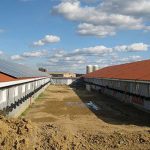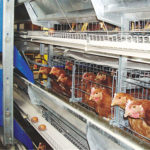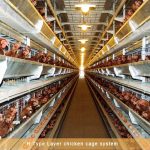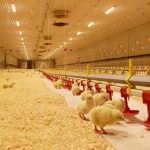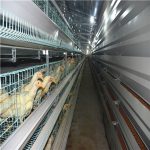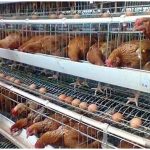When farmers usechicken cages to raise chickens in Pakistan, various problems will arise. Therefore, chicken farmers must regularly check the chicken coop and the status of the chickens in the chicken coop. The sooner it is discovered, the faster it can be solved, so as to minimize the economic loss of the farmers.
During the inspection, the following points should be paid attention to:
1. Check harmful gas
The most harmful gases to chickens are ammonia and hydrogen sulfide. Due to the strong volatility and irritation of ammonia, if a large amount of ammonia is produced in the chicken house, it will be the first to be sensed when entering the chicken house. When you smell ammonia, it means that the ammonia in the chicken house has already exceeded the standard. In addition, chicken coops that use coal stoves should be aware of carbon monoxide poisoning of personnel and chickens. When the above harmful gases exceed the amount, corresponding measures should be taken immediately, such as appropriately increasing ventilation and replacing litter to reduce the harm to chickens.
2. Check the temperature
For chickens, temperature is crucial. Seeing chicken temperature is a common method of use. Check whether the temperature on the thermometer is consistent with the actual temperature required. If the temperature is very different, immediately take measures to increase or decrease the temperature to keep the temperature within the required range.

3. Check ventilation
Check if the ventilation is good. Especially in the case of low temperature in winter, often only pay attention to keeping warm and ignore the normal ventilation. When the ventilation is good, the chickens are lively and there is no peculiar smell in the house, especially when the temperature and ventilation are up to the standard, there will be a comfortable feeling. If the chicken is found to be disease-free, wheeze, breathe slightly, have a strong peculiar smell, and is full of dust, it means that the ventilation in the chicken house is extremely poor, and ventilation should be strengthened immediately.
4. Check stool
Check the color of the stool and whether there is blood in the stool. Generally speaking, chicken feces are soft, and some feces are in strips. Some diseases can cause diarrhea in chickens, such as infectious bursal disease and infectious bronchitis. The stools of chickens are yellow and white. When chickens suffer from Newcastle disease, they produce green, yellow and white watery feces; there are bloody stools in the house, and most chickens are infected with coccidia. When the above abnormal stool is found, necropsy is given if necessary.
5. Check humidity
Check whether the humidity meets the standard. Microorganisms are easy to survive in high humidity, and the hazard of low temperature is more serious if accompanied by low temperature. If the humidity is low, the chicken house is dry, and the chickens are prone to respiratory diseases, especially the young chickens. The long-term dry environment can make the chickens dehydrated and weakened. Therefore, we must pay attention to the adjustment of the humidity of the chicken house.
The above are the precautions for farmers when they usepoultry cages system to raise chickens, and I hope to give them some help.


